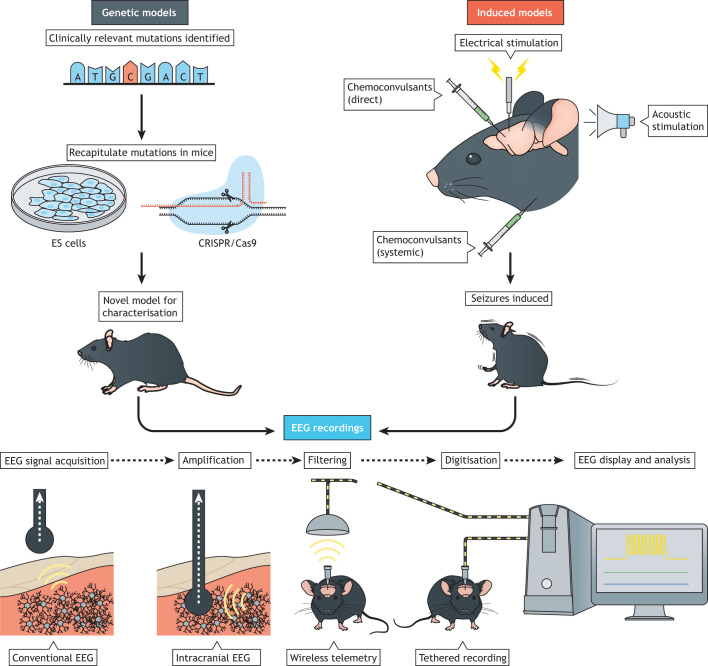Fig. 2.
Generation and characterisation of rodent epilepsy models. Genetic models are generated by knockout or knock-in mutagenesis. In induced models, seizures are typically elicited by chemical, electrical or acoustic stimulation of the brain. In both model types, the seizures are the key phenotypic readout and can be accurately and reliably detected using electroencephalography (EEG). Rodent EEG begins with the installation of electrodes or electrode arrays on the skull surface in the case of conventional EEG or beneath the skull for intracranial EEG or electrocorticography. Intracranial electrodes may be positioned at the brain surface or at a higher depth. Synchronised neuronal activity near the electrodes generates the EEG signal that undergoes various stages of amplification, filtering and digitisation before finally being displayed (Moyer et al., 2017). EEG signals may be transmitted from the animal to the computer via a cable (tethered recording) or wirelessly (wireless telemetry). ES cells, embryonic stem cells.

